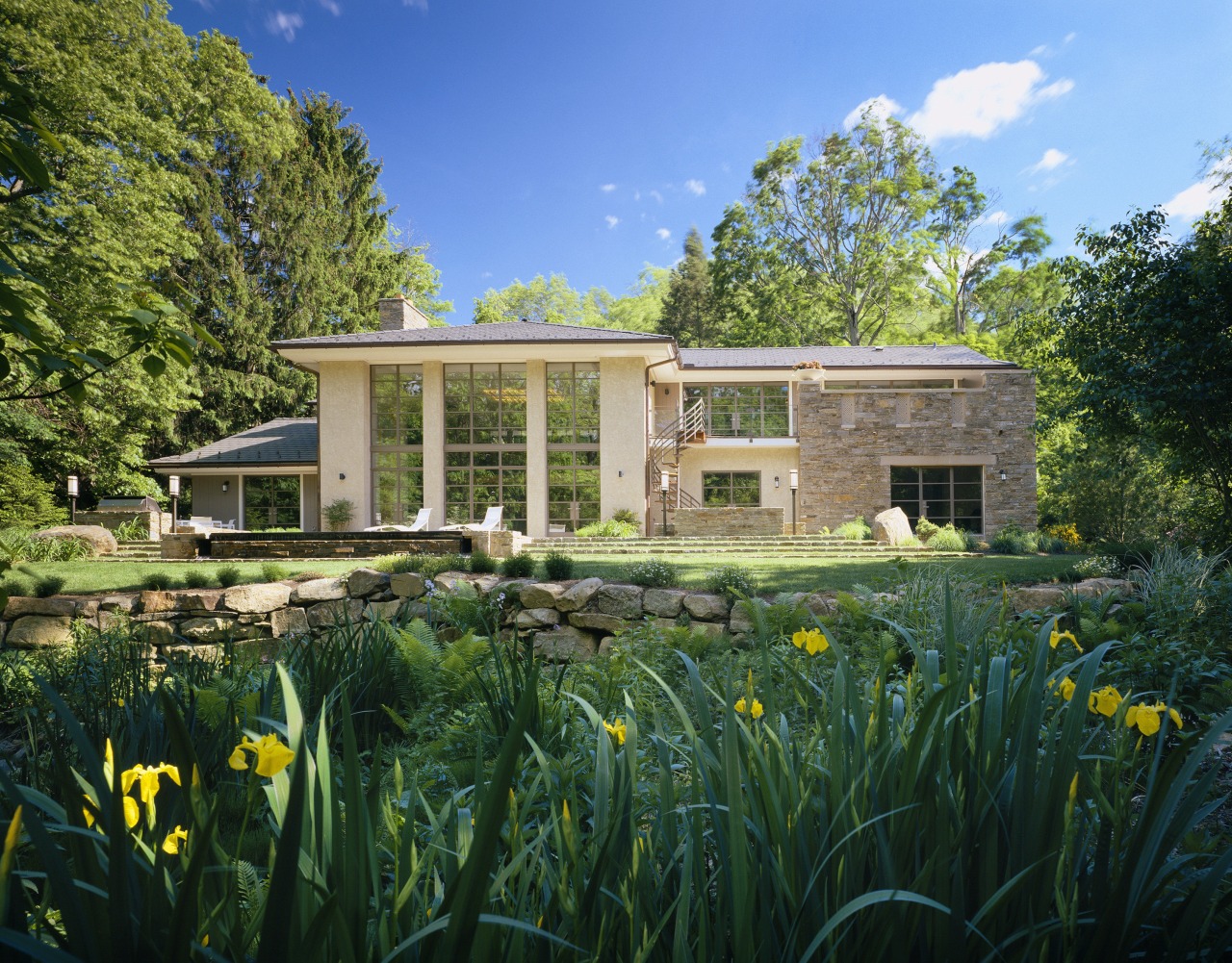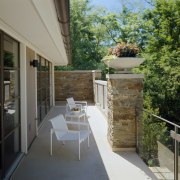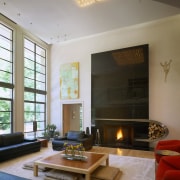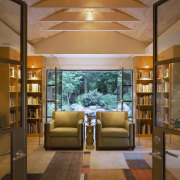Under the spell
Several key influences determined the design of this new house, including contemporary hotel lobbies in the Far East and the work of renowned American architect Frank Lloyd Wright
It is often said that location is the first, second and third most important thing to consider when buying a new property. And there's no doubt the location of this house, which borders a nature reserve, was the most compelling reason for its purchase by owner Bob Hankin.
Hankin, who is president of The Hankin Group a building development firm says he was enchanted by the natural beauty of the setting, the meandering streams and the tree-lined street that was once a plant nursery. But his plans to remodel the existing house on the site were overturned when it became apparent the house was not worth saving.
The solution? A new house, designed by architect Mike Ruegamer of Group 3 Architecture-Interiors-Planning, and built on the footprint of the original home.
Building anew meant the house could be designed to maximize the setting, and it also allowed Hankin to explore his life-long appreciation of the work of renowned architect Frank Lloyd Wright notably his house Fallingwater, in Pennsylvania.
"In my first talks with the architect, we also discussed several of Wright's houses in Chicago. Many of the design features of these houses, such as the cast concrete panels and large stone slabs, were translated for this setting," says Hankin.
Other design influences included the lobbies of contemporary hotels in the Far East, which commonly feature a sleek palette of stone, wood and steel.
"These hotels often have a complexity of form and detailing, yet they convey a simple, modern look, which is what we wanted to achieve," says Hankin.
The layout of the house was largely determined by the footprint of the original house. The single-story entry to the new house is of a similar small scale, creating a sense of welcome and intimacy. On the inside, however, the house opens up to an immense double-height volume that accommodates the great room and circulation spaces.
The interior, which is reminiscent of a modern hotel foyer, incorporates a curved mezzanine bridge that leads to the master suite. The bridge is supported by a large, tapered column featuring an Armourcoat metallic plastered surface.
"The column references traditional bridge supports it tapers in the same way," says Ruegamer. "It also visually anchors the curve of the mezzanine floor, and gives it strength, both figuratively and literally."
Another defining element in the great room is the 16ft-high, Volga Blue granite fireplace surround, which has a custom stainless steel mantel and log holder.
"This space is so large, it also needed a strong anchoring element," says the architect. "Finishing the granite slab below the ceiling level helps to bring the eye down to the firebox and the sculptural mantel."
Ruegamer says the granite slab sits six inches out from the wall the layered effect creates a sense of depth, as does the layered glass and stone facade that defines the house at the rear.
Horizontal steel-framed windows, a hallmark of Frank Lloyd Wright's architecture, form the exterior wall of the great room. This room opens out to the terraced garden and nature reserve.
The interior has a minimalist Japanese aesthetic, which is another reference to Wright's architecture. It also reflects the owner's appreciation of all things Asian. A low table in the great room, for example, is frequently used for Japanese-style casual dining.
In keeping with the Zen influence, the kitchen is a streamlined, uncluttered space at one side of the great room. An angled island was designed as a floating furniture piece. A freestanding wall of cabinets, which incorporates the sink counter, also provides a distinctive sculptural element.
The cabinets are a mix of anigre maple and darker-toned bubinga wood veneers. Bubinga paneling also features elsewhere in the house, providing a warm tone that offsets the blond maple flooring.
A separate library lined with shelving provides a tranquil reading room. Positioned near the front entrance, the library opens out to the garden and koi ponds. Both the library and the master bedroom feature gabled maple wood ceilings and exposed beams.
"The interaction between both these rooms and the outdoors reinforces the Japanese aesthetic," says Ruegamer. "The steel mullions on the windows and doors are also a little reminiscent of traditional shoji screens. And the cast stone tracery in the balcony wall beyond the master bathroom is an Asian-inspired feature."
Credit list
Interior designer
Landscape design and installation
Roofing
Trim, millwork and panels
Wallcoverings
Lighting
Fireplace
Kitchen cabinetry
Faucets
Refrigeration
Bathtub
Builder
Siding
Flooring
Paints and varnishes
Blinds
Home automation
Countertops and backsplash
Dishwasher
Bathroom faucets
Story by: Colleen Hawkes
Home kitchen bathroom commercial design
















